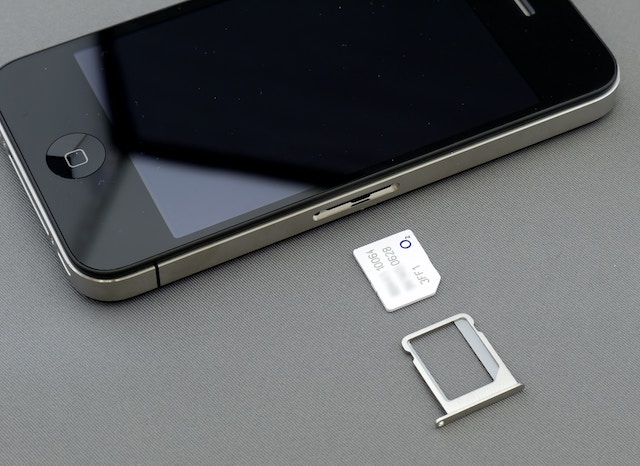Numerous Americans travel abroad despite the ongoing Russia-Ukraine conflict, yet international travel remains below pre-pandemic levels. Who travels (and how much) differs considerably across demographic groups. More often than not, income plays a decisive role. The experts at Holafly highlighted that taking a mobile device along on an international trip is convenient only if you have international roaming with an eSIM profile. International roaming allows mobile phone users to use their devices to make voice calls, send text messages, browse the Internet, and send/receive emails. Rules and rates vary from one carrier to the other, so advance preparation is of the essence to avoid disappointment.
According to the Federal Communications Commission, which oversees all interstate and international communications, the vast majority of domestic usage plans don’t cover international roaming, meaning that high usage rates apply to all cell phone functions. Simply put, if roaming isn’t included in the deal, you incur extra charges to receive a call or use Google Maps. The pay-per-use international roaming rates are exorbitant. Some companies make available temporary plans, but they’re also expensive. Mobile phone users can accumulate roaming charges by simply leaving their devices turned on while traveling outside of their home network. Believe it or not, some apps automatically send and receive data, although it seems as if the phone isn’t doing anything.
In Order to Avoid Charges, Many People Disable Data Roaming on Their Phones
Roaming extends the coverage of the home operator’s retail voice and SMS services, so individuals can continue to use their phone numbers and data services in another country. Paying roaming fees on your existing carrier is expensive when traveling abroad. Regulators have expressed their concerns regarding roaming charges and consumer bill shock, yet this hasn’t materialized into a regional or global solution. In order to avoid charges, a considerable number of roamers choose to turn off roaming on their mobile phones to prevent the devices from connecting to data networks. As mentioned earlier, higher rates apply to all of the phone’s functions.
The Roaming Auto-Retrieve feature is useful if you want to leave data roaming on for Internet browsing or email but prevent MMS messages from using mobile data. Public Wi-Fi is just about everywhere (restaurants, tourist spots, public parks, metro stations) and doesn’t count as data roaming. Contrary to popular opinion, it’s not necessary to worry about public Wi-Fi, even if it’s not completely threat-free. If you don’t trust your phone to disconnect from the data, set your device to airplane mode to stop it from emitting any kind of radio signal. It will prevent you from talking, texting, or using data.
Using An eSIM When Traveling Abroad Can Save Money in The Long Run
If you’re outside the US and still connected to a cellular network, you’re in international roaming territory. International mobile roaming is a complex service that involves numerous factors, all of which can influence the price. Roaming abroad can cost an arm and a leg, yet there are several ways to keep the bill down, such as temporary data passes, shutting off your phone, or buying a local SIM card. Probably the best course of action is to use an eSIM card when traveling internationally. The SIM card is embedded into the phone’s computer chip, and you can activate it with any cellular network service plan.
The Federal Communications Commission approves of eSIM technology because it enables individuals to switch to different carriers by leveraging software instead of going to a store. eSIM data plans for international roaming are no longer overpriced, so don’t be afraid to leave the country. You can save money on your next trip while still staying connected. Generally speaking, an eSIM is more affordable than a physical SIM card; it can store several profiles that you can activate when necessary. Rather than swiping your SIM cards every time you need to make a call or use the Internet, you can switch with a few taps. If you experience a poor connection, open your phone’s Settings app and find an eSIM carrier that works.
There’s no remarkable difference in speed between an eSIM and a physical SIM as far as accessing mobile networks is concerned (or data services), but you can expect a more reliable signal from an eSIM. A physical SIM card can be extracted from the mobile phone or lost, in which case you must visit your cellphone carrier’s nearest outlet. The eSIM account is only accessible to those who know the username and password, which translates into the fact that it’s as secure as the device. You can faithfully rely on an eSIM for all your trips – you won’t want to go back to a regular SIM. With a couple of swishes and taps, you’re good to go.
International Roaming Is a Regulatory Issue of Particular Interest
Regulation of international roaming has been widely debated, even before its implementation. In the European Union, legislation was adopted in March 2012, expanding on the previous framework scheduled to terminate in July 2012. Nevertheless, the implementation of rules or directives isn’t uniform across the world, allowing some companies an unfair advantage. Global regulation must take into consideration local market conditions to address concerns and avoid unintended consequences for mobile users and the industry. Competitive market dynamics are already strong. Mobile phone users should be able to select a tariff based on the value it provides across a number of services and operators to meet their needs.
Many argue that regulation on the roaming elements of tariffs would reduce operators’ flexibility to tailor their services to the mass market of end-users, therefore, introducing new problems. At some time in the future, it will become clear whether or not it’s true. At any rate, individuals should be able to enjoy the same mobile network quality and speed abroad as they do back home. They should receive more information about inadvertent charges and opt-out mechanisms to prevent these charges. Roaming has historically resulted in people incurring significant costs, particularly when unaware of their usage abroad.
All In All
Mobile phone operators discourage international roaming as they pay per minute rates to the network operator, so they pass the extra costs onto their customers. You could get a phone that supports the eSIM feature. After three or four trips, you’ll have made back your investment.







Recent Comments